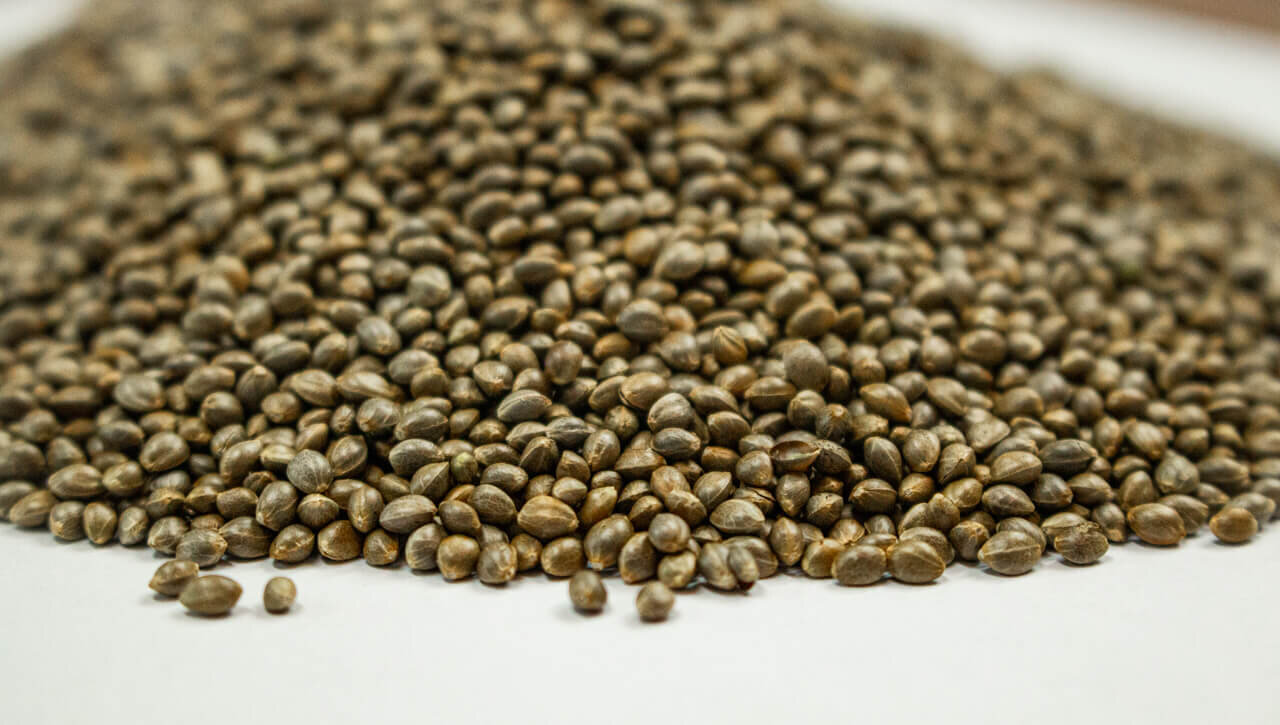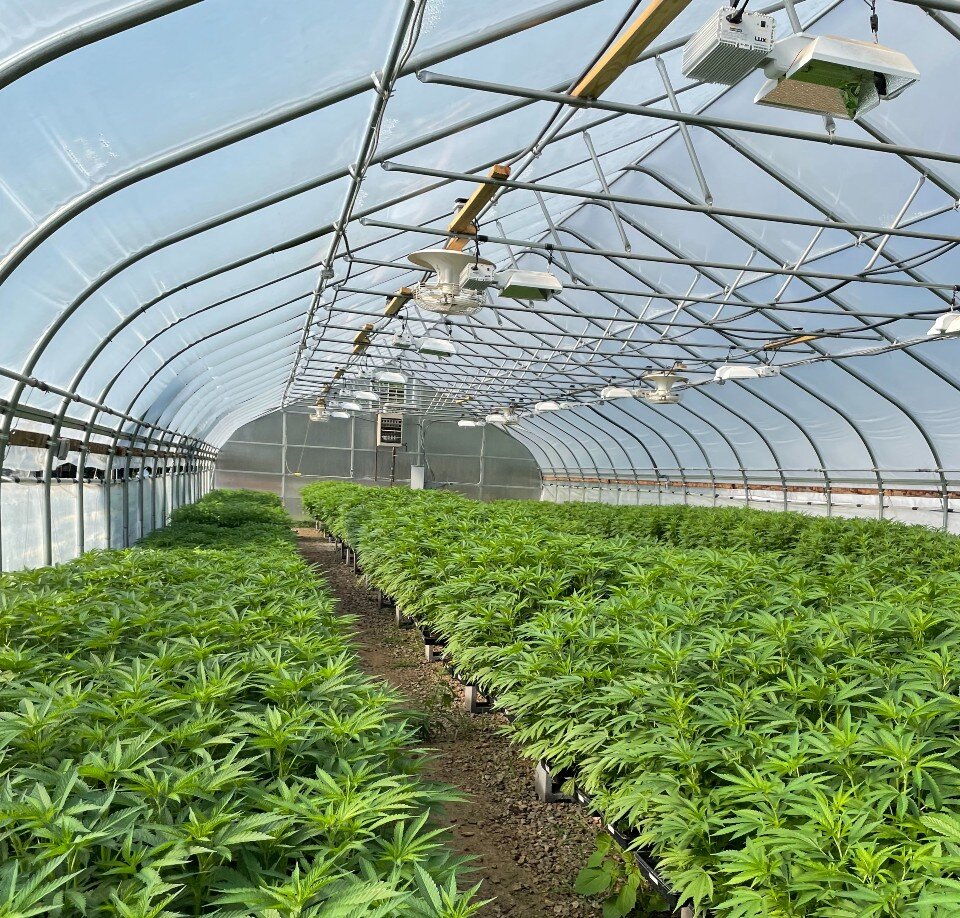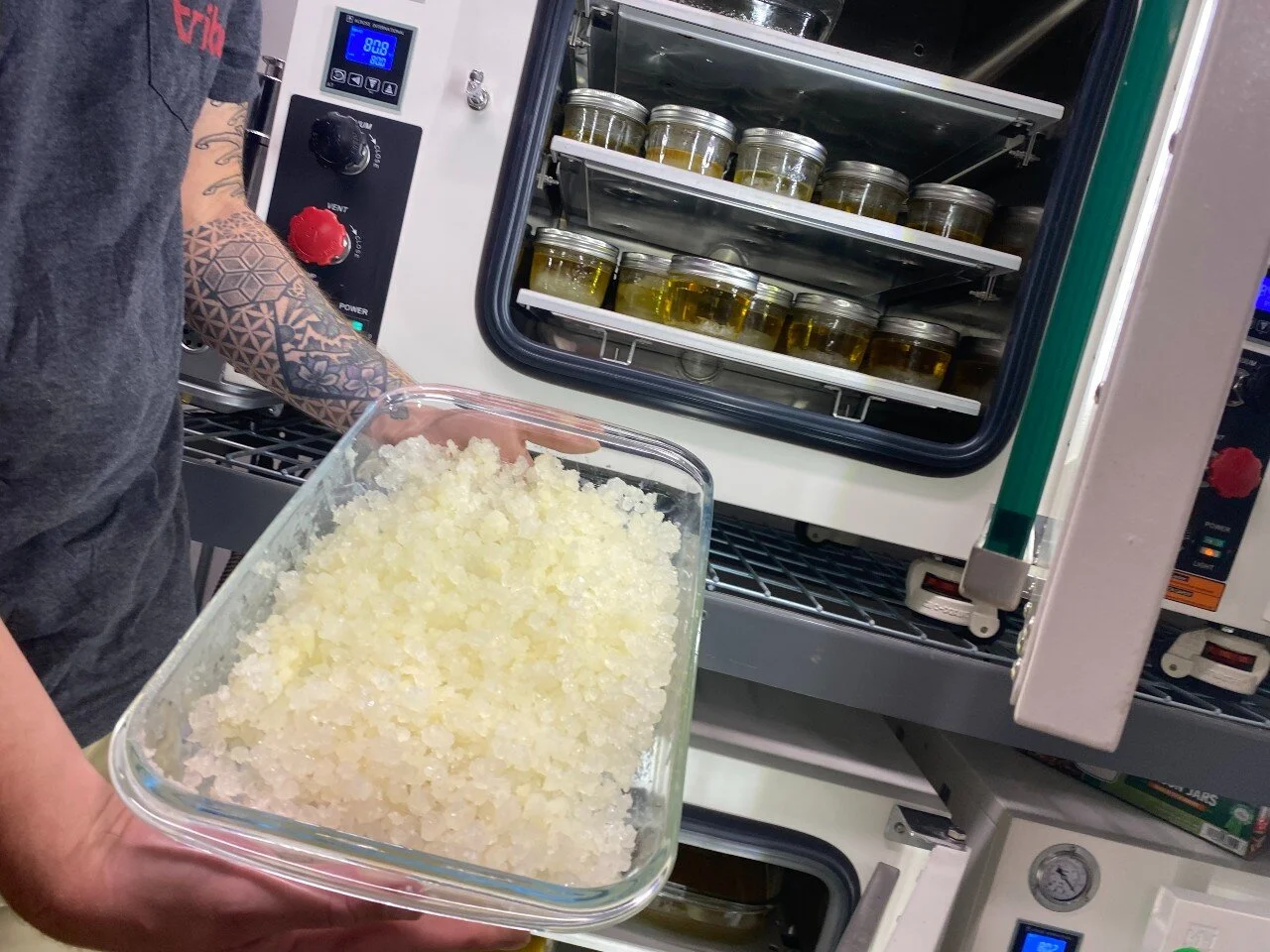Certified Hemp Seeds and Other Firsts: Catching up with Justin Jones
Written by Lance Griffin
Interview with Lance Griffin
Justin Jones sold the first recreational legal cannabis in the country. Now, years later, he helped pioneer another first: university-certified hemp seed. During several conversations with Justin, I learned more about these efforts. I also caught a glimpse into nascent cannabis markets where Justin now focuses his consulting.
Tell me more about the first university-certified hemp seed certification.
I got a deal to produce hemp seed in Oregon. We did it for couple years with the International Hemp Exchange. There were missteps because of the Association of Official Seed Certifying Agencies, AOSCA. They had to register the cultivars first. We couldn’t get a certified tag.
Oregon State University (OSU) started offering experimental certification. You do all the same work to get the seed certified, but you don’t have that AOSCA certification yet. The AOSCA certification recognizes the specific genetic or cultivar. AOSCA is the national umbrella that regulates and monitors all the local seed certifiers. They have to accept your variety as a known and accepted variety. That’s tough because they’ve never seen any hemp plants. There’s no history.
We were going through all the certification requirements here in Oregon: compliance, groundwork, inspections, and testing. But we didn’t have our variety of hemp accepted by the AOSCA board. It’s called a plant variety review. If they accept, the cultivar becomes an accepted known variety. The one we were working with is called Matterhorn™ CBG—it produces cannabigerol (CBG). The genetics are from Swiss Cannabinoid.
Our CBG cultivar stays totally compliant for tetrahydrocannabinol (THC). Cannabidiol (CBD) genetics have a tendency to run hot on THC. CBG doesn’t have the popularity of CBD, and we don’t know as much about it. But it stays compliant. We wanted to avoid getting burnt on the back end with hot hemp.
Finally, AOSCA accepted our variety at the national level. We went from a white experimental tag to the standard internationally known blue tag for certified seed. That doesn’t mean much unless you’re a hardcore farmer. Hardcore farmers want certified seed. It takes that ‘buyer beware’ out of it. You’re not getting snake oil.
What does the process of hemp seed certification involve?
OSU is the hardest certification program in the country. It’s the top seed certification service across all states.
You have to clean your seed in a certified warehouse. This requires a seed-cleaning warehouse permit from the Department of Agriculture. You register the permit with Seed Services, and they inspect the warehouse and machines. That’s part of the certification—the seed has to be free of inert material, dirt, chafe, and other seeds. If you’re growing grass seed outdoor, for example, you can’t have thistle seed in with the grass seed. You don’t want to grow a bunch of dandelions.
They came out and inspected. If you get new equipment, keep them updated. Keep your records together. They must understand your seed-cleaning process. You have to keep track of what generation from the grandmother your clones are. They come in and inspect at different times; it’s a series of field inspections. We grew all of our seed in greenhouses. But each greenhouse is a “field” in terms of the Department of Agriculture.
They haven’t ever seen the plants before. They could walk into a grass field and tell you exactly what’s going on in two seconds. They’ve seen hundreds of thousands of acres of grass. But this was a learning experience. It involves a lot of paperwork and tracking. We acquired the first license and certified our warehouse for seed cleaning for hemp. This was the first one in Oregon.
OSU tests the plants to make sure you don’t have too much THC. When you’re producing seed, there’s not really a lot of cannabinoids. You have those tests done and then you harvest the seed. Dry it. Then you put it through the (aforementioned) cleaning processes and seed machines that clean and do all that work for you.
Once you’ve got a harvest batch, which could be from multiple inspected rooms/greenhouses, OSU goes to your bulk seed, mixes it up, and takes samples. They take the samples back to the OSU Laboratory. They test the cleanliness of the seed and do germination tests. It has to be cleaned to the certification level; the inert material percentage has to be 0.2 or cleaner. It has to germinate to the certification level; the germination rate is set at 85%, and we were mainly 92-94%.
For the feminization test, they take 1,000 seeds, plant them, and grow them. Once large enough, they take a leaf sample to test if it’s male or female. In Oregon, you’ve got to be 99.99% feminized. That means you could have 10 males in 1,000 plants. It’s stringent. That’s probably the most rigorous and expensive part—paying for all those feminization tests!
In order to set all this up, OSU put together a committee of stakeholders, researchers, and seed certification professionals. We set up the standards.
This is obviously a rigorous certification. Is this the process for THC-rich cannabis seeds?
Since [THC-rich] cannabis is illegal federally, none of these people can touch it. Until the Farm Bill passed, OSU wouldn’t touch hemp. Before the Farm Bill, farmers would drop off hemp seeds, and OSU and would return them.
A type-3 CBD hemp plant is just like a THC plant. I think we have a good setup so that when cannabis is legalized federally, that will open the doors to the cannabis side of things. The cannabis world is moving forward, but it takes time.
Are you doing any work with THC-rich cannabis?
Greener Consulting Group (I’m the Vice President) is managing a farm in Oklahoma—Tribe—we’ve got a little over 30 acres outdoor. We’re growing it like hemp-CBD plants. I mean conventional agriculture, John Deere tractors, and automatic planters. This is definitely the opposite of outdoor cannabis farming in Humboldt County or Southern Oregon.
This farm specializes in fresh frozen. They have giant freezers, and basically the outdoor crop gets lightly trimmed and they freeze it fresh right out of the field immediately to preserve the terpenes. They specialize in high-terpene extracts. They do diamonds, dabs, shatter, and wax, focusing on live resin. They squish, too. That’s a new term I’m throwing out there. They’re squishers!
These guys either dry ice or bubble wash the plant material. Then they squish the hash (the bubble hash slab) through a rosin press. It’s a secondary refinement, like going from crude to distillate. You’re just taking something that’s been already refined once and refining it further.
How does farming in Oklahoma differ from typical outdoor cannabis farming?
Most states can’t have these kinds of canopies/size. State laws are restrictive; here in Oregon, you might have an acre. An outdoor grower can have 40,000 square feet of canopy. In Oklahoma, we’re in 30 acres and 1,500 plants per acre.
Oklahoma is the wild west from the medical side. It was easy to get a license immediately. The state hasn’t come around in hardcore regulation. They tried to get the Metrc tracking system booted up in spring to track everything. A bunch of people sued the state. We’ve seen it in other states; they don’t want to pay for the tags.
Many of the Humboldt and Northern California growers have migrated.
What are the challenges with this type of operation?
We’ve got 5,000 plants that need to go in the ground. Half the crew has called no-show.
The Oklahoma farm is out in the middle of nowhere. You’ve got to drive six miles on a dirt road to get there. Even if you only live 10 miles away from the farm, you’ve got 6 miles of driving at 20 mph on a dirt road that’s subgrade. If it’s been raining, it’s muddy. It’s not easy work. It’s long days and it’s hot—it’s hard work. We’re having staffing issues. I need 20 people on the ground every day, and 10 people just quit.
Here in Oregon, we have a huge community of migrant farm laborers that follow the work. In Oklahoma, that labor pool just doesn’t exist. It’s less agricultural and more cattle and meat farming. In Oregon, you make a call, and a school bus full of people will show up. You can tell the foreman what needs to be done, and it gets done. We don’t have that luxury down in Oklahoma.
This is the gap between traditional cannabis growing versus agricultural farming. We’re using tractors with transplanters and automatically shoving the plants in the ground just like with hemp.
In this wild west situation, do they regulate pesticides?
They regulate pesticides, especially because they’re doing extraction. We choose pesticides and fungicides approved for use on cannabis in Oklahoma. It’s all organic and biological. You can’t use chemical pesticides.
Everything we’re using for pesticides and fungicides is OMRI listed and organic. With extraction, we don’t want any oils, like neem oil and oil-based pesticides and fungicides. That residual on the plants contaminates extraction.
Have those cannabis seeds gone through any type of certification process?
Absolutely not. The THC world is still a giant ‘buyer beware’ environment. If you look at the history of why the government started the seed certification program, it’s because a hundred years ago, there were all these snake oil guys out selling seeds. The government realized we can’t have our food supply on shaky ground. So, with cannabis, there is none of that. You could go online and take your chances. You have no idea. If they say it’s Skunk #1 seed, you really have no idea. If they say it germinates at 89%, you have no idea that’s true. We know enough people who are breeding correctly. But for a general farmer, or the general public, you’re just taking a shot in the dark.
As we see federal legalization, the genetics of the plants and seeds will come out of the closet. We’ll have access to all these platforms to make it legit. The OSU Seed Laboratory didn’t have the machine to test for feminization in-house. They don’t do that on any other crops. They had to get a new machine to perform the tests. But now, they’re ready to rock and roll. So, if next year THC-rich cannabis becomes legal, then they do for cannabis what they’ve been doing for hemp. They don’t have to redo the lab or buy new machines.
How do you see the future of the industry?
Bigger companies are getting licenses in every new state. They’re going for all the new states.
Extractors want control of the raw material/biomass. They want to put out XYZ brand name with oil that’s the same every time. If somebody buys their cartridge in Massachusetts, then they go to Colorado and buy the cartridge, the company wants it to be the same. How do you grow the same Sour Diesel at the same potency and terpene profile in Missouri and New York? In the current environment, that’s difficult. We’re getting there.
Hemp was shattered last year with COVID-19. There was overproduction in 2019 with everybody jumping in and being super excited about being able to grow cannabis. The price crashed and burned. Now, hemp producers are exploring other compounds, including delta-8 THC and cannabigerol (CBG).
It’s a ‘hurry up and wait’ game for the U.S. Food and Drug Administration (FDA) to approve CBD as a safe substance. The U.S. Department of Agriculture (USDA) needs to say that hemp silage is good to feed to cows and pigs. The FDA could say that everybody should take CBD every day, just like they’re saying everybody should take omega-3 supplements every day. We’ve got to get to the point where the research and the studying can really be done. It is gearing up to be less expensive and easier to get to the consumer for a much lower price point once these doors open.
We’re going to see federal legalization by the end of the year. I think it’s going to be an intermediate step; they’re going to pass the banking bill, and they’re going to de-schedule cannabis, federally decriminalizing an ounce or less.
Justin Jones is the VP of Greener Consulting Group. He opened the first recreational dispensary in Colorado, Dank Dispensary (in Denver). Justin also founded Kush Bottles (Colorado), the industry standard for child-safe cannabis packaging in 2014. Kush bottles (KSHB) became a publicly traded company in 2016. Additionally, Justin was a founding partner of Denver Consulting Group, a cannabis consultation agency based in Colorado. DCG focused on emerging markets and wrote successful license applications in Illinois, New York, Maryland, Pennsylvania, Ohio, Alaska, Oregon, California, and Colorado. DCG was acquired by Medicine Man Technologies (MDCL/SHWZ) in 2017.
Justin was one the first legal cultivators in the country to implement METRC tracking. He was also a founding board member of the Colorado Cannabis Chamber of Commerce. Last but not least, Justin was the Director of Oregon Operations for the International Hemp Exchange, overseeing a one-million-square-foot greenhouse facility and over 500 acres of high CBD hemp fields in Oregon.





